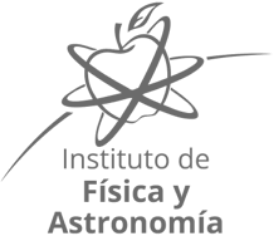Astrostatistics
Researchers
- Patricia Arévalo
- Jura Borissova
- Michel Curé
- Eduardo Ibar
- Radostin Kurtev
- Claus Tappert
- Nikolaus Vogt
- Maja Vuckovic
Areas of research
Astrostatistics is a field characterized by its interdisciplinary nature, where techniques and algorithms originating from statistics, data analysis, and machine learning are amalgamated with astronomical research to address complex challenges associated with the analysis and interpretation of astronomical data and theory (numerical simulations). Within this domain, the application of statistical methods for the analysis, modelling, and drawing of conclusions from extensive and intricate datasets generated through various astronomical observations and/or numerical simulations is entailed.
Over the past decades (and the near future), a notable surge in data collection within the realm of astronomy has been witnessed, driven by the progression of observational technologies. This surge has led to accumulating datasets of paramount proportions, necessitating advanced statistical tools to conduct meaningful analyses. This engagement encompasses the application of statistical techniques to process and cleanse observational data, effectively addressing challenges such as uncertainties, outliers, and instances of missing values.
Additionally, a specialization in the field of modelling is embraced,wherein the development of mathematical models aimed at portraying the physical processes and phenomena observed within the universe isundertaken. Encompassing tasks within this specialization include fitting models to data, estimating parameters, and selecting pertinent models based on the available data.In conjunction with modelling, the domain of inference is one of themore attractive disciplines in astrostatistics. The process of inferenceinvolves the derivation of probabilistic conclusions and predictionsfrom data, often incorporating the utilization of Bayesian methods toquantify the extent of uncertainty and integrate pre-existing knowledge seamlessly. Expertise within this realm extends to the spheres of classification and clustering, activities thatidentify distinct astronomical entities—from stars and galaxies to quasars—based on the attributes they exhibit through observation.
Astrostatistics encompasses a wide range of topics, including but not limited to:
- Data Analysis: Applying statistical techniques to process and clean observational data, dealing with uncertainties, outliers, and missing values.
- Modelling: Developing mathematical models to describe physical processes and phenomena observed in the universe. This includes fitting models to data, parameter estimation, and model selection.
- Inference: Making probabilistic conclusions and predictions from data, often involving Bayesian methods to quantify uncertainty and incorporate prior knowledge.
- Classification and Clustering: Identifying different types of astronomical objects, such as stars, galaxies, and quasars, based on their observed properties.
- Time Series Analysis: Analyzing data that vary over time, such as light curves from variable stars or transient events.
- Spatial Analysis: Investigating the distribution and clustering of celestial objects in three-dimensional space.
- Surveys and Catalogs: Developing methods for extracting meaningful information from large-scale astronomical surveys and constructing catalogs of celestial objects.
- Machine Learning: Employing machine learning algorithms to automatically discover patterns, correlations, and anomalies in astronomical data.
Astrostatistics plays a crucial role in extracting meaningful insights from vast amounts of astronomical data, enabling researchers to better understand the nature of celestial objects, the structure of the universe, and the underlying physical processes governing astronomical phenomena.
Among the research carried out in the field of astro-statistics at the Universidad de Valparaíso are the following: Deconvolution of the probability distribution of the stellar rotation velocity, Obtaining stellar parameters from a grid developed by the massive stars group, Detection of gravitational microlensing, Detection of periods in star light curves, Extension of Gaussian processes, Imputation of missing data in gaps, Data analysis and modelling of seeing at astronomical sites.
Some collaborators with IFA members are: Dr. Alejandra Christen (IDEUV) , Dr. Daira Velandia (IDEUV) , Dr. Javier Contreras (IDEUV), and the Ph.D. students: Felipe Avila nad Gunther Avila. External collaborators are: Dr. Lydia Cidale (UNLP), Dr. Michaela Kraus (ASU), Dr. Anna Aret (UTARTU), Dr. Ignacio Araya (UM), Dr. Julia Cassetti (UBA), Dr. Diego Rial (UBA), Dr. Pedro Escárate (PUCV), among others

